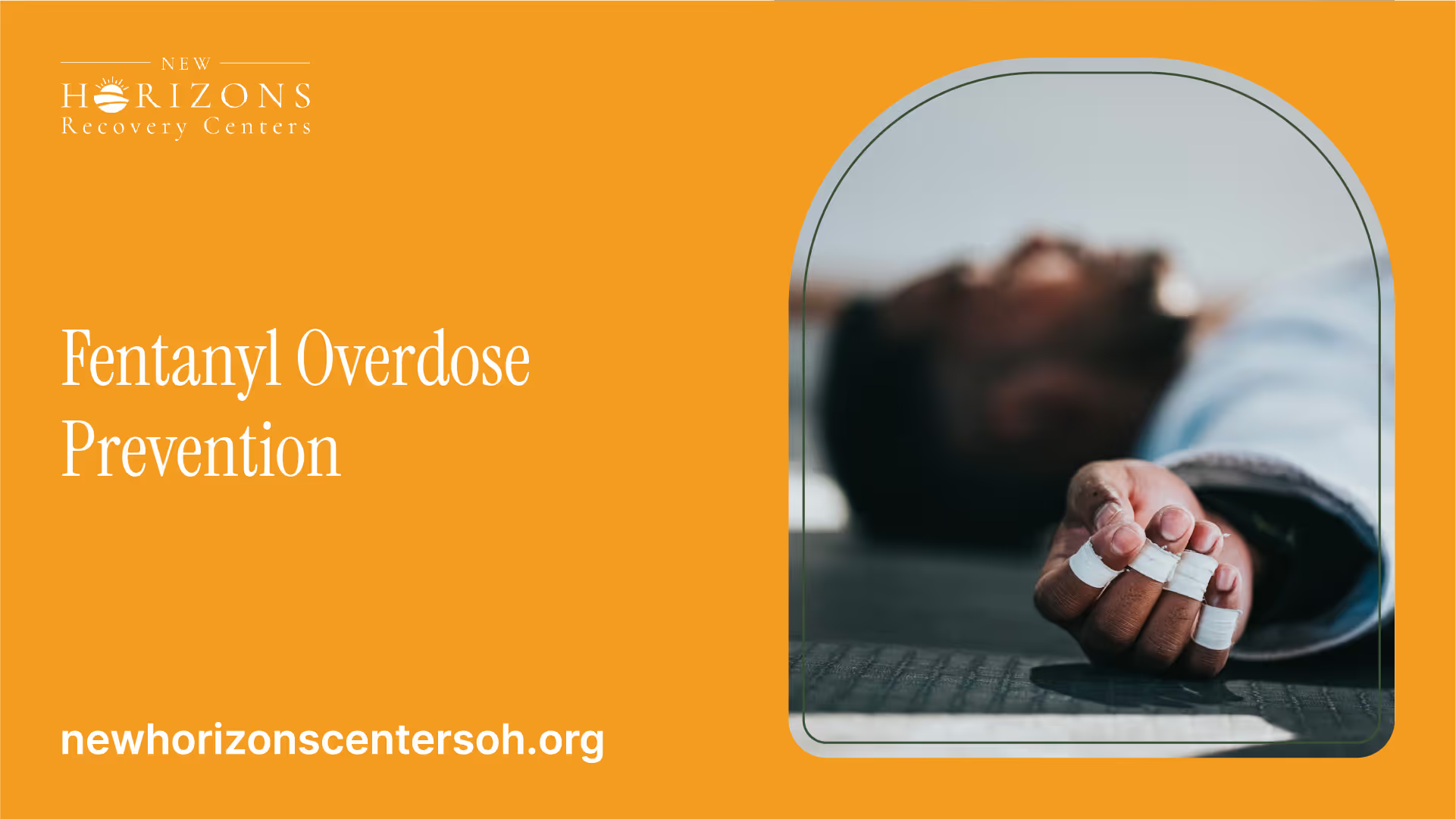Understanding Fentanyl
Fentanyl is a potent synthetic opioid that is much stronger than other opioids, such as morphine or heroin. It is primarily used for managing severe pain, particularly in medical settings like hospitals. However, it has also gained notoriety as a dangerous and illicit drug due to its high potency. In this section, we will explore what fentanyl is, the dangers of fentanyl abuse, and the concerning rise of fentanyl overdoses.

What is Fentanyl?
Fentanyl belongs to the class of drugs known as opioids. It works by binding to opioid receptors in the brain, blocking pain signals, and producing feelings of euphoria. Fentanyl is estimated to be about 50 to 100 times more potent than morphine, making it an extremely powerful drug.
In medical settings, fentanyl is typically administered through injection, transdermal patches, or lozenges. However, illicitly manufactured fentanyl is often found in powder or pill form, making it easier for people to misuse or mix with other drugs unknowingly.
The Dangers of Fentanyl Abuse
One of the most significant dangers of fentanyl abuse is its high potency. Even a small amount of fentanyl can lead to a life-threatening overdose. Due to its strength, individuals who are not accustomed to opioids or are unaware that they are consuming fentanyl are at an increased risk of overdose.
Fentanyl abuse can result in severe respiratory depression, leading to a decreased supply of oxygen to the brain and other vital organs. This can result in coma, permanent brain damage, and even death. The risk of overdose is further increased when fentanyl is combined with other substances, such as alcohol or benzodiazepines.
The Rise of Fentanyl Overdoses
In recent years, there has been a disturbing rise in fentanyl-related overdoses. Illicitly manufactured fentanyl has become more prevalent in the illegal drug market, often being mixed with other substances like heroin or cocaine. This combination increases the risk of overdose as individuals may unknowingly consume fentanyl without understanding its potency.
According to data from the Centers for Disease Control and Prevention (CDC), fentanyl-related overdose deaths have been steadily increasing. In 2019, there were over 36,000 deaths involving synthetic opioids like fentanyl, accounting for the majority of opioid-related deaths in the United States.
The rise in fentanyl overdoses highlights the urgent need for education, awareness, and prevention measures to combat this public health crisis. By understanding the dangers of fentanyl abuse and recognizing the signs of overdose, individuals can take steps to protect themselves and their loved ones from the devastating consequences of fentanyl misuse and overdose.
Recognizing the Signs of Fentanyl Overdose
To effectively prevent and respond to fentanyl overdoses, it is crucial to be able to recognize the signs of an overdose. Fentanyl is a potent synthetic opioid that can cause life-threatening respiratory depression and other severe complications. Understanding the physical symptoms and behavioral signs of a fentanyl overdose can help save lives by enabling prompt intervention.
Physical Symptoms of Fentanyl Overdose
When someone has overdosed on fentanyl, there are several physical symptoms that may manifest. It's important to note that these symptoms can vary from person to person, and not everyone will exhibit the same signs. The table below outlines common physical symptoms associated with a fentanyl overdose:
Physical Symptoms
- Slow or shallow breathing
- Difficulty breathing or gasping for breath
- Blue lips or fingertips (cyanosis)
- Pinpoint pupils (pupillary constriction)
- Cold, clammy skin
- Limpness or loss of muscle control
- Unresponsiveness or unconsciousness
If you encounter someone exhibiting these physical symptoms and suspect a fentanyl overdose, it is crucial to seek emergency medical assistance immediately. Time is of the essence in such situations, and prompt action can be life-saving.
Behavioral Signs of Fentanyl Overdose
In addition to physical symptoms, there are also behavioral signs that may indicate a fentanyl overdose. These signs can provide further insight into the severity of the situation. Remember that behavioral signs can vary among individuals. The table below highlights common behavioral signs associated with a fentanyl overdose:
Behavioral Signs
- Confusion or disorientation
- Extreme drowsiness or difficulty staying awake
- Inability to speak or slurred speech
- Slow or absent response to stimuli
- Loss of consciousness
- Gurgling or choking sounds
- Pale or ashen face
If you observe any of these behavioral signs in someone who may have been exposed to fentanyl, it is crucial to take immediate action. Call emergency services or the local helpline for assistance. While waiting for help to arrive, try to keep the person awake and in an upright position if possible.
Recognizing the physical symptoms and behavioral signs of a fentanyl overdose is essential for timely intervention and potentially saving lives. By being aware of these signs, you can play a vital role in preventing tragedies associated with fentanyl misuse.
Preventing Fentanyl Overdose
Taking proactive measures to prevent fentanyl overdose is of utmost importance in combating the growing opioid crisis. By focusing on education, awareness, and harm reduction, we can work towards reducing the risks associated with fentanyl use.
Education and Awareness
Education plays a vital role in preventing fentanyl overdose. It is essential to raise awareness about the dangers of fentanyl and provide accurate information to individuals who may come into contact with this potent opioid. By educating both the general public and high-risk populations, we can empower individuals to make informed decisions regarding their substance use.
Key aspects of education and awareness initiatives include:
- Spreading knowledge about the signs and symptoms of fentanyl overdose, as well as the risks associated with fentanyl use.
- Providing information about safer alternatives to fentanyl, such as non-opioid pain management options.
- Delivering outreach programs in schools, community centers, and healthcare settings to reach a wide audience.
- Collaborating with healthcare professionals, law enforcement agencies, and community organizations to disseminate information effectively.
By investing in robust education and awareness campaigns, we can equip individuals with the knowledge needed to protect themselves and others from the dangers of fentanyl.
Harm Reduction Measures
Harm reduction strategies are crucial in preventing fentanyl overdose and minimizing the associated risks. These measures aim to reduce harm without requiring individuals to stop using substances altogether. By implementing harm reduction practices, we can help prevent fatal overdoses and provide support to individuals struggling with substance use disorders.
Some common harm reduction measures include:
- Distribution of naloxone kits: Naloxone is an opioid antagonist that can reverse the effects of a fentanyl overdose. By providing naloxone kits to individuals at risk, including those who use fentanyl and their loved ones, we can save lives in emergency situations. Training programs that teach proper administration of naloxone are also essential.
- Safe consumption sites: These supervised facilities provide a controlled environment for individuals to use drugs under the supervision of healthcare professionals. Safe consumption sites offer sterile equipment and naloxone, reducing the risk of overdose and providing an opportunity for engagement with healthcare services.
- Needle exchange programs: By providing clean needles and syringes, needle exchange programs reduce the spread of bloodborne infections, such as HIV and hepatitis C. These programs also offer referrals to healthcare and addiction treatment services, promoting overall well-being.
Harm reduction measures prioritize the health and safety of individuals who use fentanyl, aiming to prevent overdose and minimize the negative consequences associated with opioid use.
By combining education, awareness, and harm reduction strategies, we can make significant strides in preventing fentanyl overdose. It is crucial for communities, healthcare providers, and policymakers to work together to implement these preventive measures and support individuals affected by fentanyl use.
Naloxone: The Life-Saving Antidote
In the fight against fentanyl overdose, naloxone plays a critical role as a life-saving antidote. This section explores what naloxone is and how it reverses fentanyl overdose.
What is Naloxone?
Naloxone is a medication that is used to rapidly reverse opioid overdose, including fentanyl overdose. It works by binding to the same receptors in the brain that opioids like fentanyl attach to, effectively blocking their effects. Naloxone can quickly restore normal breathing and prevent severe consequences or death from opioid overdose.
Naloxone is available in different forms, including nasal sprays and injectable formulations. The nasal spray version is easy to use and does not require any special medical training. It can be administered by spraying the medication into the nostrils of a person experiencing an overdose.
How Naloxone Reverses Fentanyl Overdose
When someone overdoses on fentanyl, their breathing can become dangerously slow or even stop. Naloxone rapidly reverses this by displacing the fentanyl from the opioid receptors in the brain. This displacement allows normal breathing to resume, preventing the potentially fatal consequences of respiratory depression.
It's important to note that naloxone is not a treatment for fentanyl addiction. It is an emergency response medication that buys time for individuals to receive further medical attention. Once naloxone is administered, it is crucial to seek immediate medical help even if the person appears to have recovered.
Naloxone is a crucial tool in preventing fentanyl-related deaths. It is used by first responders, healthcare professionals, and individuals who may encounter someone experiencing an opioid overdose. Education and access to naloxone are vital components of comprehensive harm reduction strategies aimed at reducing the devastating impact of fentanyl overdoses.
The use of naloxone has been instrumental in saving countless lives. By increasing awareness about naloxone and ensuring its widespread availability, we can make a significant impact in preventing fentanyl overdose deaths and supporting individuals on the path to recovery.
Seeking Help and Support
If you or someone you know is struggling with fentanyl addiction or has been affected by fentanyl abuse, it is important to seek help and support. There are various treatment options available for fentanyl addiction, as well as support services for individuals and families dealing with the consequences of fentanyl use.
Treatment Options for Fentanyl Addiction
Treating fentanyl addiction requires a comprehensive approach that addresses both the physical and psychological aspects of the addiction. Here are some common treatment options for fentanyl addiction:
Treatment Option and Description
Detoxification: The first step in treating fentanyl addiction is often detoxification, which involves clearing the drug from the body and managing withdrawal symptoms under medical supervision.
Medication-Assisted Treatment (MAT): MAT combines medication, such as methadone or buprenorphine, with counseling and behavioral therapies to help individuals reduce cravings, manage withdrawal symptoms, and work towards recovery.
Residential Treatment Programs: Residential treatment programs provide intensive, 24/7 care in a structured environment. These programs typically offer a combination of individual and group therapy, medical support, and additional services to address the specific needs of individuals with fentanyl addiction.
Outpatient Treatment Programs: Outpatient treatment programs allow individuals to receive treatment while living at home and attending therapy sessions and counseling appointments on a scheduled basis. These programs offer flexibility while still providing professional support.Support GroupsSupport groups, such as Narcotics Anonymous (NA), provide a supportive environment for individuals in recovery. These groups offer peer support, encouragement, and a sense of community for those overcoming addiction.
It's important to remember that treatment options may vary depending on individual circumstances and the severity of the addiction. Seeking guidance from healthcare professionals or addiction specialists can help determine the most appropriate treatment approach.
Support for Individuals and Families Affected by Fentanyl
Fentanyl addiction not only impacts individuals struggling with addiction but also their families and loved ones. It is crucial for both individuals and families to seek support during this challenging time. Here are some resources available for support:
Support Resource and Description
Counseling and Therapy: Individual therapy or family counseling can provide a safe space to address the emotional impact of fentanyl addiction and develop coping strategies.
Support Hotlines: Helplines and support hotlines offer immediate assistance, guidance, and resources for individuals and families affected by fentanyl addiction.
Community Organizations: Non-profit organizations and community centers often provide support groups, educational programs, and other resources for individuals and families impacted by addiction.
Online Forums and Communities: Online platforms can provide a space for individuals to connect with others who have experienced similar challenges, offering support, advice, and a sense of belonging.
Remember, seeking help and support is a sign of strength. Whether it's reaching out to healthcare professionals, addiction specialists, or support groups, there are resources available to assist individuals and families affected by fentanyl addiction.
Sources
Fentanyl and Opioid Overdose Prevention







